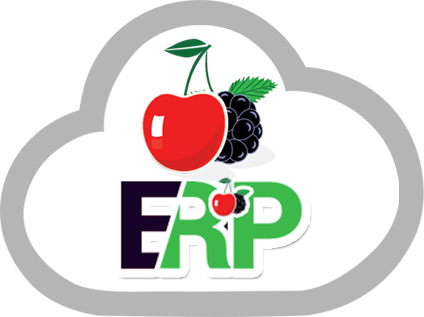Streamlining Operations: How ERP Inventory Management System Transforms Business Functions
For manufacturers and distributors, ERP inventory management system can make or break operations. Excess stock ties up working capital while stock outs frustrate customers and inhibit revenue. Even minor miscounts distort projections and disrupt production plans downstream. Yet manually tracking myriad raw materials, components, finished goods, warehouses, and supplier orders at scale quickly becomes untenable. Hence the need for advanced yet accessible inventory control systems tying integrated data to core business processes. By unifying financials, supply chain, sales, production, and fulfilment under a common cloud platform, Enterprise Resource Planning (ERP) inventory management system provides real-time inventory visibility and coordination across the entire organisation.
Core Capabilities of ERP Inventory Management System:
Some of the core capabilities of ERP inventory management system are given below:
Inventory Control:
ERPs centralise inventory data to provide a continuously updated single source of truth on what is on-hand, reserved, inbound, and outbound. Tight supply chain integration ensures raw material receipts and supplier orders update stock levels automatically. Sales order fulfilment reservations likewise decrement inventory counts dynamically. Sensor data and production outputs further maintain accuracy.
With consolidated enterprise-wide visibility and tracking, ERP inventory modules readily surface excesses and shortfalls, eliminate duplicate orders, and prevent costly misalignments between warehouse and accounting records. Unified architecture minimises latency for decision-makers needing the latest inventory status across the production and distribution lifecycle.
Bill of Materials and Work Orders:
Manufacturing ERPs manage multi level bills of materials (BOMs) specifying components required to build each product configuration. Integrated work order management organises and tracks production runs based on actual or planned inventory levels against BOM needs. By aligning raw material inventories, production schedules, and client order requirements, businesses minimise delays due to missing parts while maximising production efficiency.
Procurement and Replenishment:
Inventory optimization starts with procurement. ERPs generate suggested supplier orders and automated replenishments based on projected production materials needs plus desired buffer stock levels and lead times. Some systems even evaluate past demand patterns, seasonal fluctuations, and supply risks to recommend economic order quantities balancing inventory carrying costs against stock outs. This takes the guesswork out of complex reorder point formulas.
Warehouse Management:
Operating across physical and virtual warehouses, ERP inventory management system modules assign storage locations and optimise picking sequences when fulfilling orders. This minimises travel distance to accelerate order processing and reduce errors. Bin barcodes, Radio-frequency identification (RFID) tags, and warehouse management mobile apps further support just-in-time accuracy for receiving, put away, transfers, and shipping.
Reporting and Analytics:
Robust inventory reporting provides executives, production planners, and procurement teams actionable insights into performance. Interactive dashboards deliver visibility into historical materials and finished goods usage plus projections of needs based on incoming orders. Drill-downs diagnose the operational drivers, good or bad, behind inventory KPIs to inform systemic improvements.
With analytics built atop the unified inventory dataset within ERPs, supply chain leaders can gain perspective into item velocities, carrying costs, turnover rates, and sourcing risks. Such quantified operational intelligence guides optimal decision-making across inventory settings, from buffer targets to reorder policies to supplier selections.
Competitive Advantage via Inventory Optimization:
Streamlining and coordinating inventory management, procurement, warehouses, suppliers, sales orders, and shop floor activities allows businesses to operate leaner. Excess inventory storage costs drain profits while missing materials disrupt production. ERP integrated inventory control minimises waste while maximising throughput and revenue.
With analytics-driven supply chain management and demand forecasting refined over time, manufacturers further mature capabilities to respond to shifting customer preferences. Maintaining optimum rather than maximum inventory also lowers regulatory financial reporting requirements. The cash flow benefits stem upstream as sourcing streamlines and downstream as fulfilment costs decrease, and the data transparency ERP inventory management system provides into supply vulnerabilities allows proactive risk management to secure production continuity. With inventory optimization powered by ERP platforms, manufacturers and distributors keep operations running smoothly despite marketplace uncertainties by turning data into decisions of excellence.
Conclusion:
Inventory management is a complex endeavor that can make or break supply chain operations. Yet an advanced ERP inventory management system now provides the consolidated visibility, coordination, and analytical capabilities needed to optimize these decisions at scale. By centralising inventory tracking across warehouses, sales, production plans, and procurement channels, unified datasets enable transparency between functions. Configurable analytics in turn transform this comprehensive visibility into actionable insights guiding managers. Ultimately streamlining inventory positions businesses to enhance continuity despite disruptions, accelerate fulfilment, and improve working capital cycles through leaner yet nimbler operations. With adaptable machine learning forecasts and inventory optimization models built into modern ERPs, supply chain leaders can now not only reach, but sustain per excellence levels. Visit CherryBerry ERP for more details.
